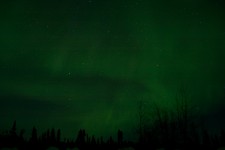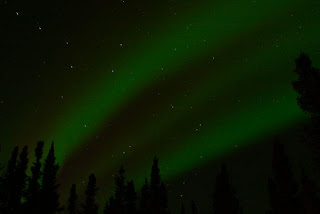The northern lights danced across the star-studded sky last week but this time twilight was encroaching–even at 2 a.m. Outlines of trees on the northern horizon were visible against the midnight-blue sky that only permitted the brightest stars to shine.
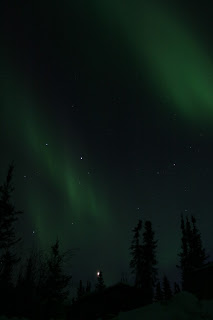 |
| Northern Lights with glow of twilight on northern horizon |
Pure darkness will not come again until autumn. As we gain over seven minutes of daylight everyday (for over 18 hours of visible light), the sun’s path doesn’t dip below the horizon for as long or as far.
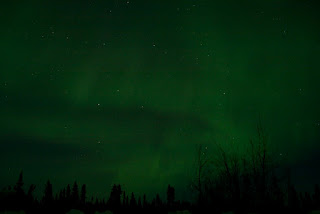 |
| Northern lights across southern sky |
Twilight dominates night from 11 p.m. to 5 a.m. There are three types of twilight: civil, nautical and astronomical. In technical terms, civil twilight is when the sun is between the horizon and six degrees below the horizon, nautical twilight is when the sun is six to twelve degrees below the horizon and astronomical twilight is when the sun is 12 to 18 degrees below the horizon.
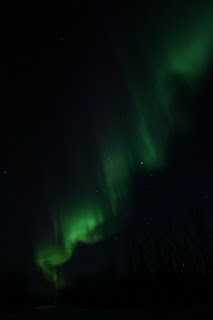 |
| Ribbon of light streaming from western horizon |
In more familiar terms, civil twilight is right before the sun rises and after it sets when there is enough daylight to work outside. Nautical twilight is when all the stars used for celestial navigation are visible. And astronomical twilight is when the faintest stars appear and outlines of large objects and the horizon are barely visible.
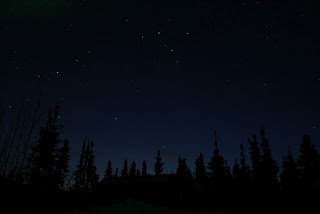 |
| 3 a.m. in Bettles |
In Bettles right now, we have no astronomical twilight–the sun doesn’t dip more than 12 degrees below the horizon. The length of nautical twilight is short–less than two hours between about 1 a.m. to 3 a.m. The brightest northern lights can still be seen rippling overhead during nautical twilight but it won’t be long before the midnight sun prevails.
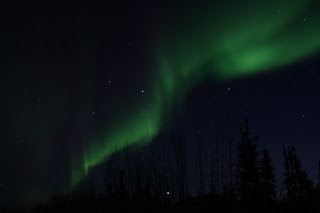 |
| Northern lights dancing across northern sky lit by nautical twilight |


